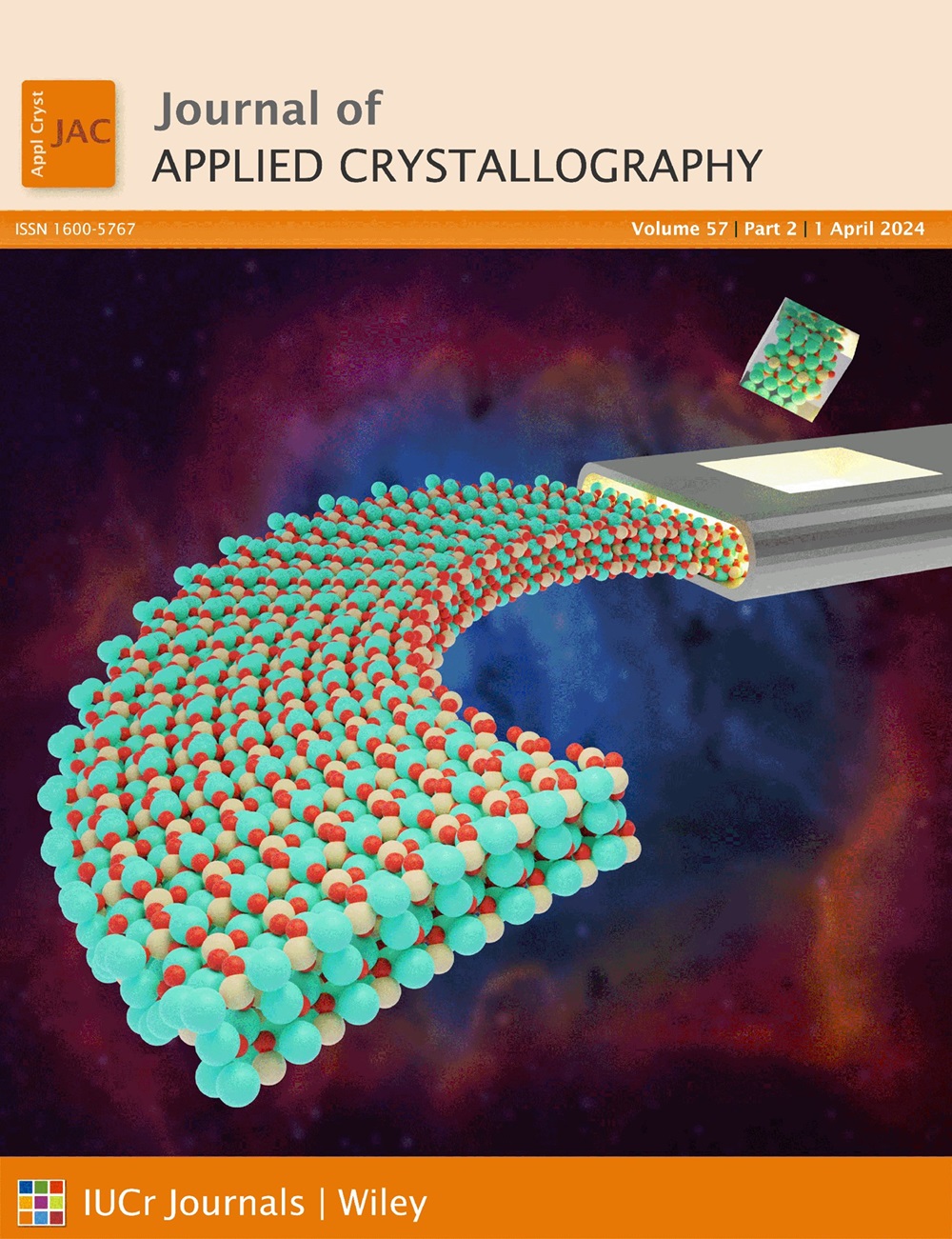程序 VUE:利用均匀球形网格分析低温电子显微镜投影的分布情况
IF 5.2
3区 材料科学
Q2 CHEMISTRY, MULTIDISCIPLINARY
引用次数: 0
摘要
三维低温电子显微镜重建是通过从物体的大量投影中提取信息来实现的。这些投影对应不同的 "视图 "或 "方向",即这些投影显示重建物体的方向。这些视图的不均匀分布和优先方向的存在可能会扭曲重建的空间图像。这项工作介绍了 VUE 程序(用于低温电子显微镜的均匀网格视图),该程序旨在研究这种分布情况。其算法基于球面上的均匀虚拟网格,可以轻松计算并准确定量分析视图的频率分布。关键的计算元素是将球面均匀网格投影到圆盘上的朗伯方位角等面积投影。这种投影保持了表面积的恒定性,代表了没有视觉偏差的频率分布。由于该程序有多个可调参数,因此很容易适应个人需求、特定项目的特点或将要制作的图形。它可以帮助识别与视图分布不均有关的问题。程序还可以修改投影列表,使视图分布更加均匀。该程序还可用作教学工具。本文章由计算机程序翻译,如有差异,请以英文原文为准。
Program VUE: analysing distributions of cryo-EM projections using uniform spherical grids
Three-dimensional cryo electron microscopy reconstructions are obtained by extracting information from a large number of projections of the object. These projections correspond to different `views' or `orientations', i.e. directions in which these projections show the reconstructed object. Uneven distribution of these views and the presence of dominating preferred orientations may distort the reconstructed spatial images. This work describes the program VUE (views on uniform grids for cryo electron microscopy), designed to study such distributions. Its algorithms, based on uniform virtual grids on a sphere, allow an easy calculation and accurate quantitative analysis of the frequency distribution of the views. The key computational element is the Lambert azimuthal equal-area projection of a spherical uniform grid onto a disc. This projection keeps the surface area constant and represents the frequency distribution with no visual bias. Since it has multiple tunable parameters, the program is easily adaptable to individual needs, and to the features of a particular project or of the figure to be produced. It can help identify problems related to an uneven distribution of views. Optionally, it can modify the list of projections, distributing the views more uniformly. The program can also be used as a teaching tool.
求助全文
通过发布文献求助,成功后即可免费获取论文全文。
去求助
来源期刊

Journal of Applied Crystallography
CHEMISTRY, MULTIDISCIPLINARYCRYSTALLOGRAPH-CRYSTALLOGRAPHY
CiteScore
7.80
自引率
3.30%
发文量
178
期刊介绍:
Many research topics in condensed matter research, materials science and the life sciences make use of crystallographic methods to study crystalline and non-crystalline matter with neutrons, X-rays and electrons. Articles published in the Journal of Applied Crystallography focus on these methods and their use in identifying structural and diffusion-controlled phase transformations, structure-property relationships, structural changes of defects, interfaces and surfaces, etc. Developments of instrumentation and crystallographic apparatus, theory and interpretation, numerical analysis and other related subjects are also covered. The journal is the primary place where crystallographic computer program information is published.
 求助内容:
求助内容: 应助结果提醒方式:
应助结果提醒方式:


